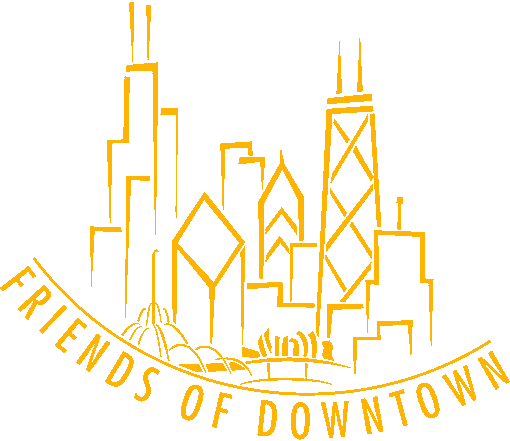Between 2002 and 2015, Grant Park in downtown Chicago has seen the completion of major public amenities and new destinations such as Millennium Park and Maggie Daley Park with support from and response to a wide-ranging spectrum of public and private interests. Overall, design and construction since 2002 has varied within the Park, from natural landscaping, to sculptures, to a one-of-a kind ice skating rink surrounding a climbing wall and a gigantic playground.
However, many strategies from the Grant Park framework plan have not been fully realized. The South Grant Park area – bound by Michigan, Roosevelt, Balbo and Lake Shore Drive – seems to have received the least amount of improvement, and that’s where this story begins.
On July 13th, 2016, Friends of Downtown, Perkins+Will and Site Design Group convened a charrette at The Cliff Dwellers (a Chicago-based organization supporting art and culture locally) to assemble a unique group of influential stakeholders including the Chicago Park District, Grant Park Conservancy, Metra, UIC Great Cities Institute, local resident associations, Keep Grant Green, Friends of the Parks, the School of the Art Institute of Chicago, Chicago Department of Transportation, Chicago Department of Planning, South Loop Living, South Loop Neighbors, APA IL, Chicago Metropolitan Agency for Planning, Metropolitan Planning Council.
Members of The Friends of Downtown, Perkins+Will and Site Design group facilitated (and participated as local stakeholders), with the overarching goals of the session being:
1) Solicit ideas for improvements to the Park from short-term low cost, easily implemented initiatives, to long-term significant transformations of the Park with high-end costs.
2) Discuss an attainable number of strategies that are to move forward with in advancing the Park’s mission and purpose.
3) Prioritize the feasibility of implementations.
Using these goals as foundation touchstones, the charrette kicked off by addressing the residential development along the north and south edges of the Park which has increased significantly with development of the River East neighborhood at the north, and museum campus residences at the south. Current development trends were discussed that suggest thousands of additional residential units along the south edge of the Park, and that South Grant Park will continue to grow in importance for neighborhood use while remaining a global destination.
The kick-off also included a presentation on the history of the park, relevant information from the original 2002 framework plan, current land-use surrounding the park, transportation and access, and the significant Grant Park events held throughout the year such as the Chicago Marathon, Taste of Chicago, Blues Fest, Lollapalooza, and the Black Hawks victory rally (which Chicago has seen many of the last decade).
“Blue sky” conversations ensued, followed by more focused group work and presentations, conveying ideas around increasing the quantity of natural park area, developing an iconic destination, gateway or “hub” at the south end of the park, and improving Columbus Avenue to serve as a connector rather than barrier. Unanimous recommendations include improvements to wayfinding, and simplifying and improving bike and pedestrian networks through the park, while adding east-west connections across the Metra tracks. Additionally, the blended groups identified several studies and investigations that need to occur, such as economic analysis of various events and uses, traffic study, and understanding of what funding mechanisms are available – the lack of this data was discovered to be the greatest hurdle for prioritizing any of the proposed updates.
At the conclusion, the groups felt the proposed physical updates to the Park also required a decision-making process and an established set of values agreed upon which would inform policy, design decisions, funding, and navigating the sensitive issues between larger scale regional event programming of the park and fulfilling the needs of the local neighborhood.
To carry this initiative forward and continue the conversation about how to position Grant Park for the future, Friends of Downtown, Perkins+Will and Site Design group are in process of creating a schedule for additional community input including town-hall style meetings, online surveys and other events to solicit input from a much larger group of stakeholders and other in the community who’s voices need to be heard. In getting in on the ground floor with this transformation project, all parties hope to play key roles in helping the iconic Park realize its next phase of development. Stay tuned for more in 2017!

